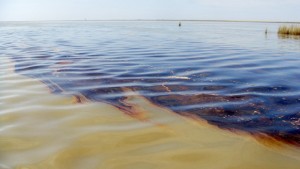 Well looks like BP did a fine job of hiding the oil! Researchers are still working to understand the dynamics of the Deepwater Horizon oil spill and its impact on the Gulf of Mexico. A new paper published this week in the proceedings of the National Academy of Science uses some unique data gathered from the leaking oil well.
Well looks like BP did a fine job of hiding the oil! Researchers are still working to understand the dynamics of the Deepwater Horizon oil spill and its impact on the Gulf of Mexico. A new paper published this week in the proceedings of the National Academy of Science uses some unique data gathered from the leaking oil well.
The group collected direct, in situ samples of the oil gushing out of the well using one of the submersible ROVs which were in service at the time. Other attempts to characterize the leaked petroleum were based on samples taken higher in the water column and at the surface, but at that point the oil had already undergone significant changes. Together with the US government’s final volume estimate for the spill of 4.1 million barrels, the team calculated that 170 million kilograms of single-carbon to five-carbon-chain compounds were released.
Some of the petroleum made it up to the surface (the lighter, more volatile compounds), and some settled on the bottom (heavier, insoluble hydrocarbons), Characterizing the behavior of the surface and seafloor fractions of the spill is very difficult because of the large amount of chemical dispersants that were used, but the dissolved petroleum may tell the majority of the story. It appears that most of the spill’s output dissolved in deep ocean water on the way up and was transported away with the current. That’s why the deep plume that was tracked following the spill was so large and the images of oil-slicked beaches were less overwhelming than many expected.
With the role of nature to reduce the oil impact in the Gulf made it harder to get an accurate estimate of how much oil was actually dispersed.
